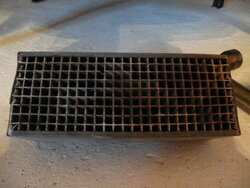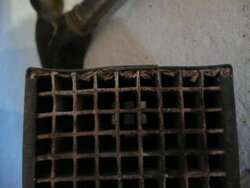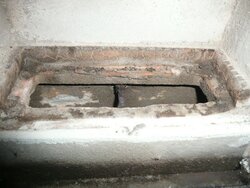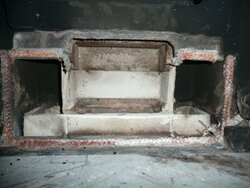the stove should only occasionally be run with the damper open. Risk of creosote buildup if the cat is not used. also the stove will not be at all efficient and will not put out any serious heat if the cat is not engaged and working. you will see if you fix the cat the stove will put out so much heat you probably won´t be able to be in the same room, as you say it is already putting out sufficient heat. it feels like 4 times more heat with the cat engaged!
I have rebuilt 2 of these stoves and they are serious little heaters but need to be properly maintained, it is like a Ferrari, easy to break but when it works its just fantastic!
And Joa , i also live in Sweden. Your cat seem pretty worn out but the refractory unit l ok, be careful with that and treat it like an egg! seriously, it is very expensive and if you need to vacuum out the ashes from the bottom if it, attach a smaller flexible hose to the vac cleaner and stick that hose down carefully and reduce the suction. do not use the nozzle it will destroy it. Also your secondary probe seem a bit short, you should try to get a new one, because if the copper rod is burnt off, the secondary burn will be too hot because the heat is not transmitted to the bi-metal spring and the air supply is therefore not closed. this can lead to broken cat and refractory unit, the two most expensive parts to replace, around 400 bucks in US, or if you order from the Swedish VC dealer Camina, don´t even think about it...
I have rebuilt 2 of these stoves and they are serious little heaters but need to be properly maintained, it is like a Ferrari, easy to break but when it works its just fantastic!
And Joa , i also live in Sweden. Your cat seem pretty worn out but the refractory unit l ok, be careful with that and treat it like an egg! seriously, it is very expensive and if you need to vacuum out the ashes from the bottom if it, attach a smaller flexible hose to the vac cleaner and stick that hose down carefully and reduce the suction. do not use the nozzle it will destroy it. Also your secondary probe seem a bit short, you should try to get a new one, because if the copper rod is burnt off, the secondary burn will be too hot because the heat is not transmitted to the bi-metal spring and the air supply is therefore not closed. this can lead to broken cat and refractory unit, the two most expensive parts to replace, around 400 bucks in US, or if you order from the Swedish VC dealer Camina, don´t even think about it...





